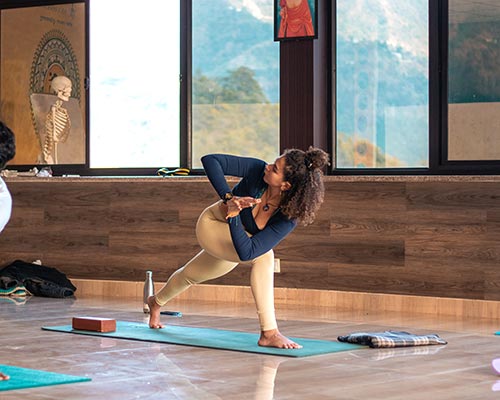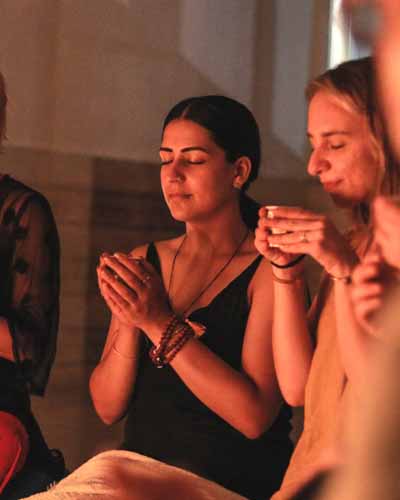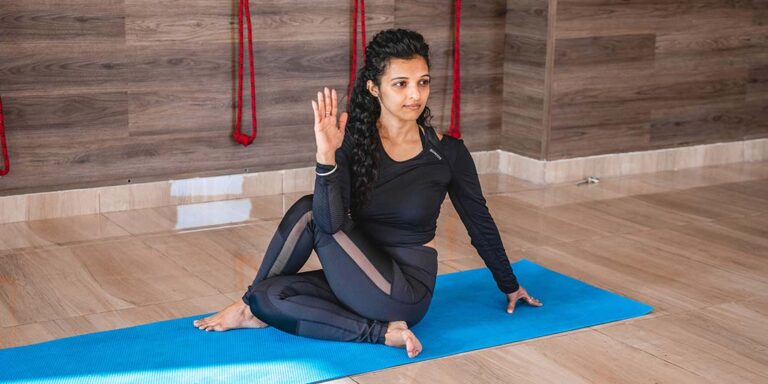Mayurasana (Peacock Pose) Steps, Benefits, Variations, Precautions & Method
What is Peacock Pose (Mayurasana)
The word ‘Mayur’ in Sanskrit means Peacock. This posture resembles a peacock when performed correctly. In Hatha yoga practice Mayurasana is an arm-balancing posture that helps to develop abdominal and pelvic that is practiced under Hatha Yoga. Being able to perform Mayurasana is not just dependent upon the body strength, the bigger factor here is body type and weight distribution. If either of the portions of the body is heavier, finding balance becomes difficult.
Consistent practice of Mayurasana with the combination of other Hatha Yoga asanas can help improve digestion and internal organ health.
Tips and Variations to Practice Mayurasana (Peacock Pose)
- Kneel on the ground in a squat position on your toes with the heels lifted. Join the two forearms together and the palms on the floor.
- With a complete external rotation of your shoulders and the thumbs touching together point the thumbs towards the feet.
- Bring the abdomen closer to the elbows and find the balance against the naval. This will be the first stage of the posture.
- After finding the strength with weight distributed equally on the elbows, stretch the legs and raid them to the level of your head. After aligning the legs with the head, this will be the second stage of the posture.
For variation purposes, one can use a pillow as a support in the front of the nose. The use of a prop like a strap wrapped around the elbows to keep them centered will help the beginners to understand the posture and balance.
One can practice with one leg on the ground while the other is lifted. Keep on moving the legs one after another until you find the confidence to bring both legs up together.
Mayurasana requires full body activation from head to toe. Repeat the variation and hold the asana on each leg for 5 to 10 seconds before proceeding to attempt it in the final posture. Following the correct technique will help you avoid injury and help you build trust in yourself to be able to hold an arm-balancing posture.
Peacock pose (Mayurasana) benefits
- Mayurasana helps to improve the digestive system by increasing the digestive power.
- Peacock pose might help to improve the appetite, get rid of gas, and help avoid bile and phlegm imbalances. This is a result of increased pressure on the abdomen area.
- Our internal organs like the Kidney, Liver, and the Diaphragm
- It also helps in the process of Purification
- As the body is balanced on the elbow and hand, it might stimulate the vagus nerve which has a calming effect on the brain. As the vagus nerve gets activated, it can help better stimulate the gall bladder to properly secrete bile in the body Similar stimulation can help to massage the pancreas resulting in proper secretion of insulin in the body.
- Can also help to gain strength in the core muscles, shoulders, and quads.
Precautions and contraindications of Mayurasana (Peacock pose)
- Avoid performing after abdominal surgery
- People with high blood pressure, wrist and elbow problems
- Women who are menstruating and pregnant
- When the entire weight is on the wrist and elbows, the wrong alignment can cause injury in the associated muscles.
- People with vertigo problems and cerebral palsy should avoid performing in Mayurasana.
- Recent surgeries on the shoulder
With the right guidance from a qualified and experienced yoga teacher, one can continue to practice Mayurasana. It is a challenging pose and requires extreme physical strength. While performing this posture, one must have a teacher present for beginners.
FAQs
Can women practice Mayurasana?
In the practice of Ashtanga Vinyasa, there is repetitive practice of Mayurasana, although excessive practice might result in fertility issues for women in the long run.
Is Mayurasana for beginners?
No, Mayurasana is not for beginners, one can begin to learn the posture under guidance but it requires preparatory asanas.
How to get rid of the fear of falling in Mayurasana?
Trust in yourself for the arm-balancing postures comes with time. Being able to perform variations one after another can help to increase confidence.
Should children below the age of 15 perform Mayurasana?
Under the guidance of a teacher children can perform the posture but for females, it might become challenging in the future.
How much weight is on shoulders while practicing Mayurasana?
The trick is not in the strength of the arms it is in the understanding of the distribution of weight in the body. Once there is equal distribution, the balancing becomes natural.






